Grainau: hiking and beer at 3000 meters en ru

How it all looks from the ground.
For her vacation, Yuliya decided to show me the beautiful German mountains and took me for a couple of days to Grainau — it's a piece of Bavaria that's almost like Switzerland. At least, it is similar to the pictures of Switzerland that I've seen :-D
In short, it's a lovely place with a measured pace of life. If you need to catch your breath, calm your nerves, and enjoy nature, then this is the place for you. But if you can't live without parties, you'll get bored quickly.
What's there:
- The highest mountain in Germany plus a couple of glaciers.
- There's skiing in winter. If you really need it, you can find a place to ski in summer, but the descent is short, and the lifts are turned off.
- A large clean lake and a couple of smaller ones.
- A huge number of trails for hiking.
- A huge number of waterfalls, streams, and a couple of mountain rivers.
- Restaurants with beer.
- Beautiful fallen trees in the forests, private property, fences, cows with bells, and "racing tractors" (I don't know how to name this phenomenon better, but tractors are moving fast there :-D).
This is briefly, and now in detail.
Zugspitze
Zugspitze — the highest point in Germany — almost 3000 meters.
Like everything in Germany, the mountain is as civilized and standardized as possible. You can get to the summit via tourist trails of varying difficulty, a cable car, and even a railway (!). At the top, there's internet, beer in several restaurants, ski trails, lots of Germans and Austrians in helmets for added safety.
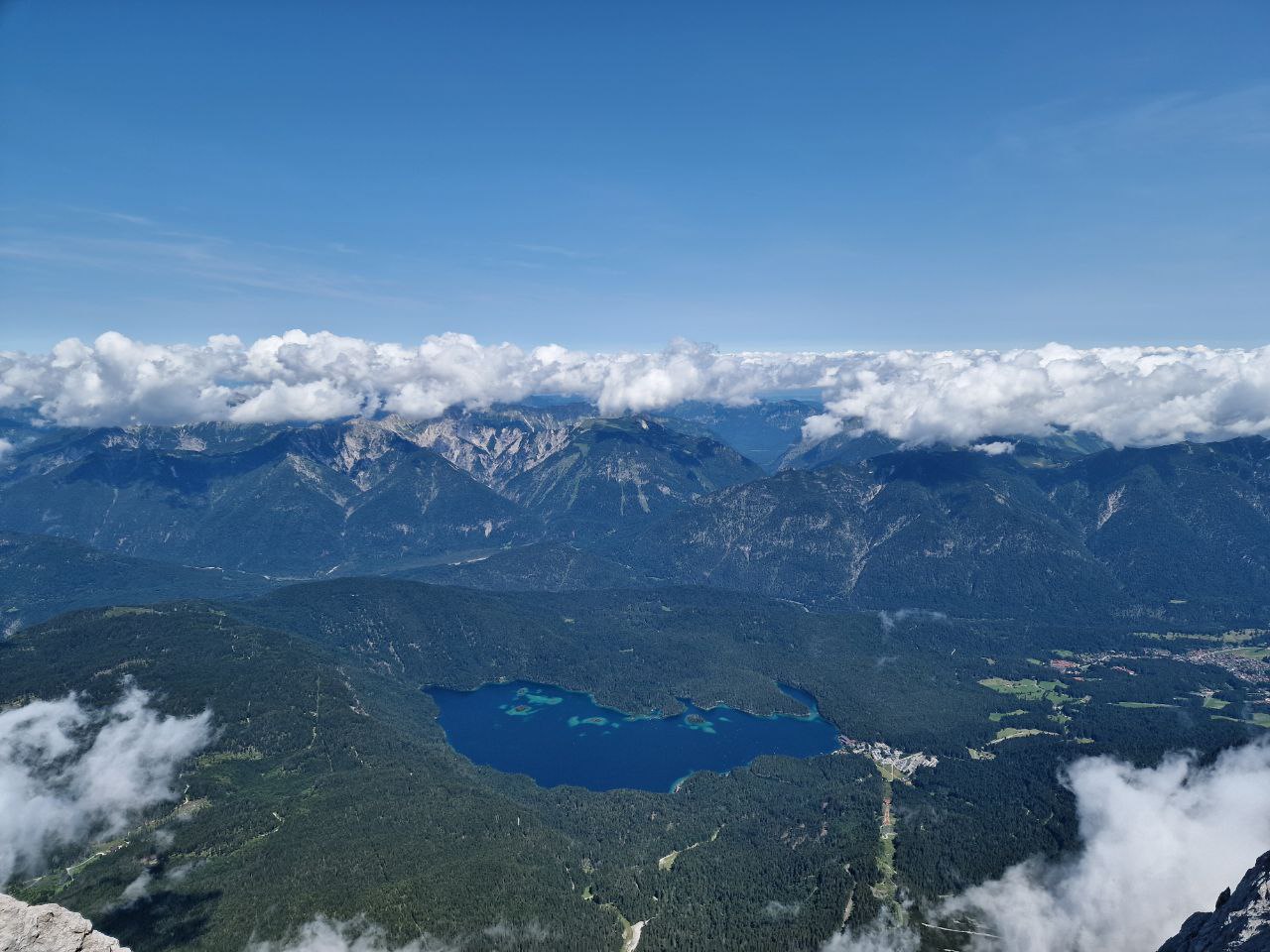
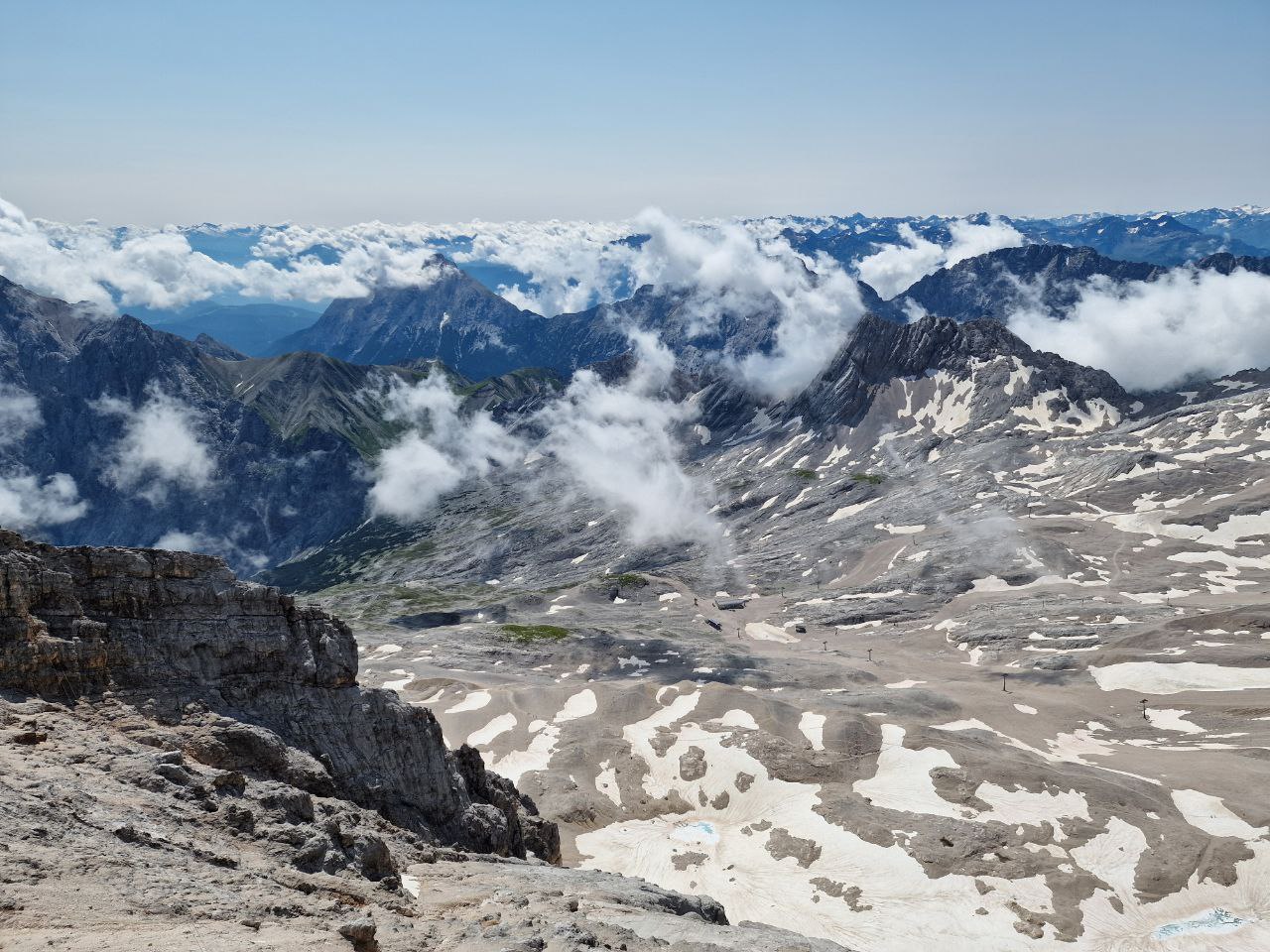
View from Zugspitze: on Granau and on the Alps.
The border between Germany and Austria passes somewhere along the mountain, so at the top, there are two lifts, two observation platforms, and two restaurants. It's funny that the basic set of dishes in the restaurants is different. The Germans have a canteen with German sausage, ketchup, and French fries, while the Austrians have their own sausages (thinner) with mustard and pretzels.
If you really want to, you can walk up to the top of the mountain, but it will take a lot of time (according to the signs, it takes 8-10 hours from the village) and require some equipment: sticks, shoes, a helmet. And 3000 meters is not a joke — there's less oxygen up there — some training is needed. We didn't risk it :-D
There are remnants of the last glaciers in Germany on the mountain. Scientists say they will melt entirely soon, so hurry up.
Surprisingly, there was a snow mountain (in summer) where you can slide straight to the remains of the glacier.
My attempt at sledding at 3000 meters :-)
Eibsee
Eibsee — a lake near Zugspitze. You might have noticed it in the photos above.
The water is clean and suitable for swimming, and there's a boat rental, but we didn't test the water: sometimes the weather wasn't right, and sometimes we didn't have time.
You can walk from the villages to Eibsee, but it takes a long time and the path has a significant elevation, so it's better to go by bike, bus or train.
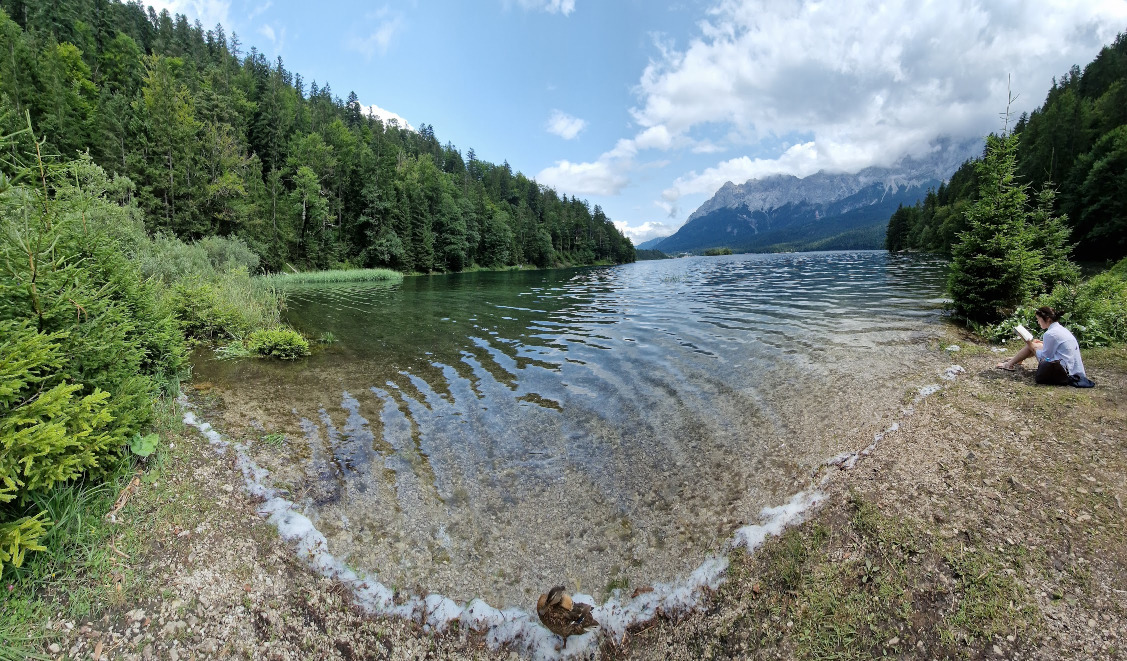
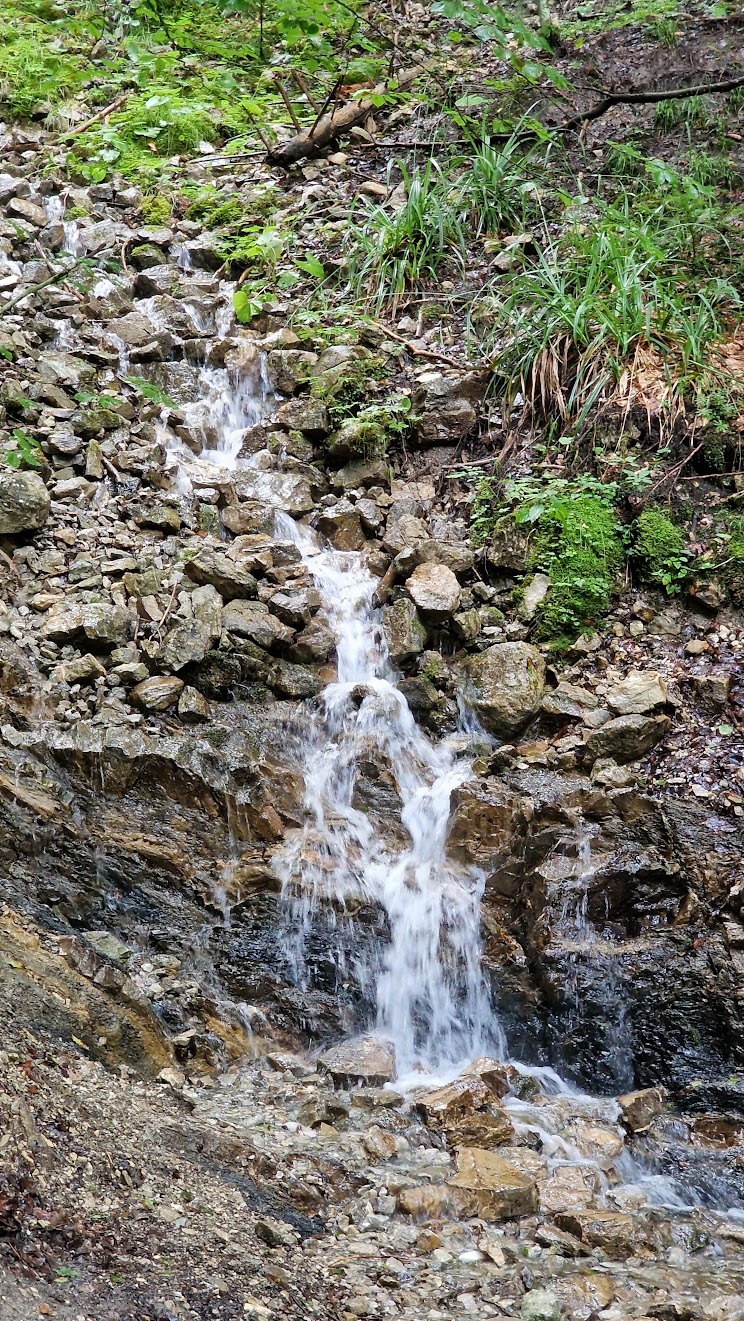
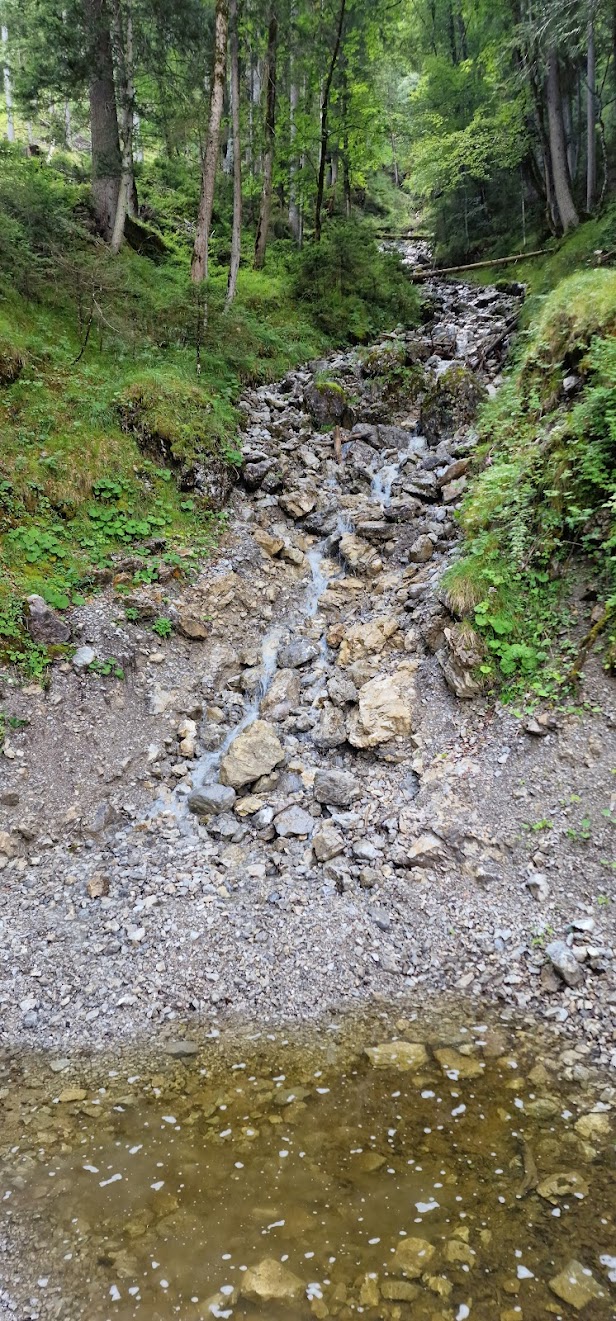
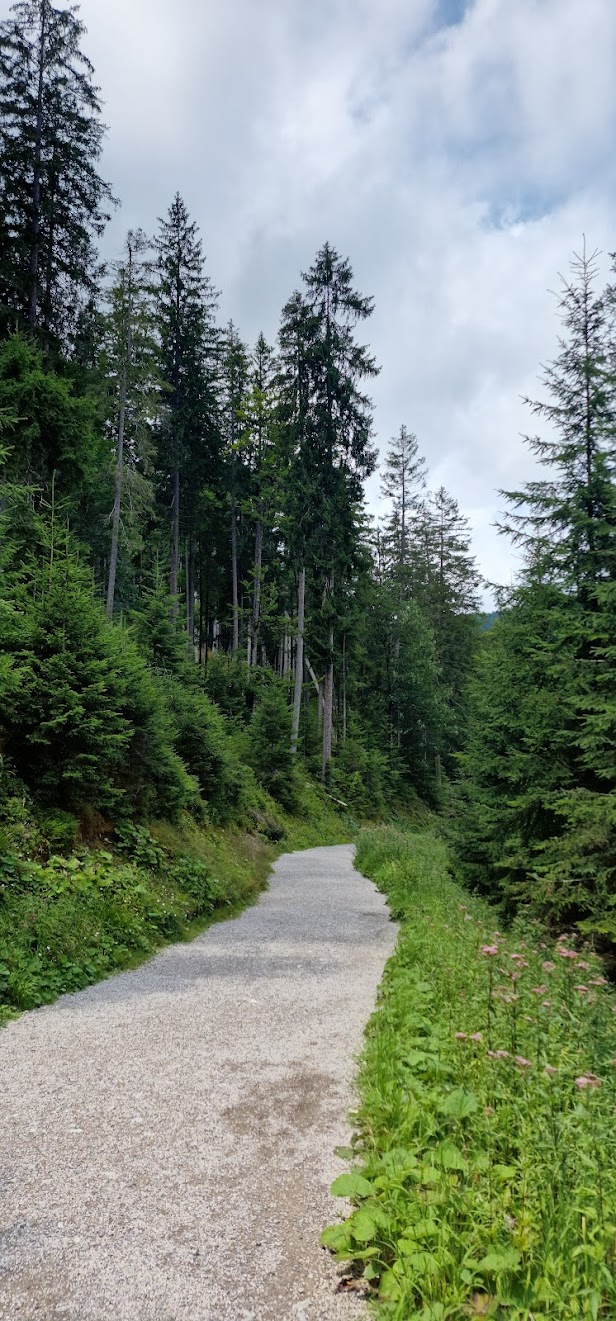
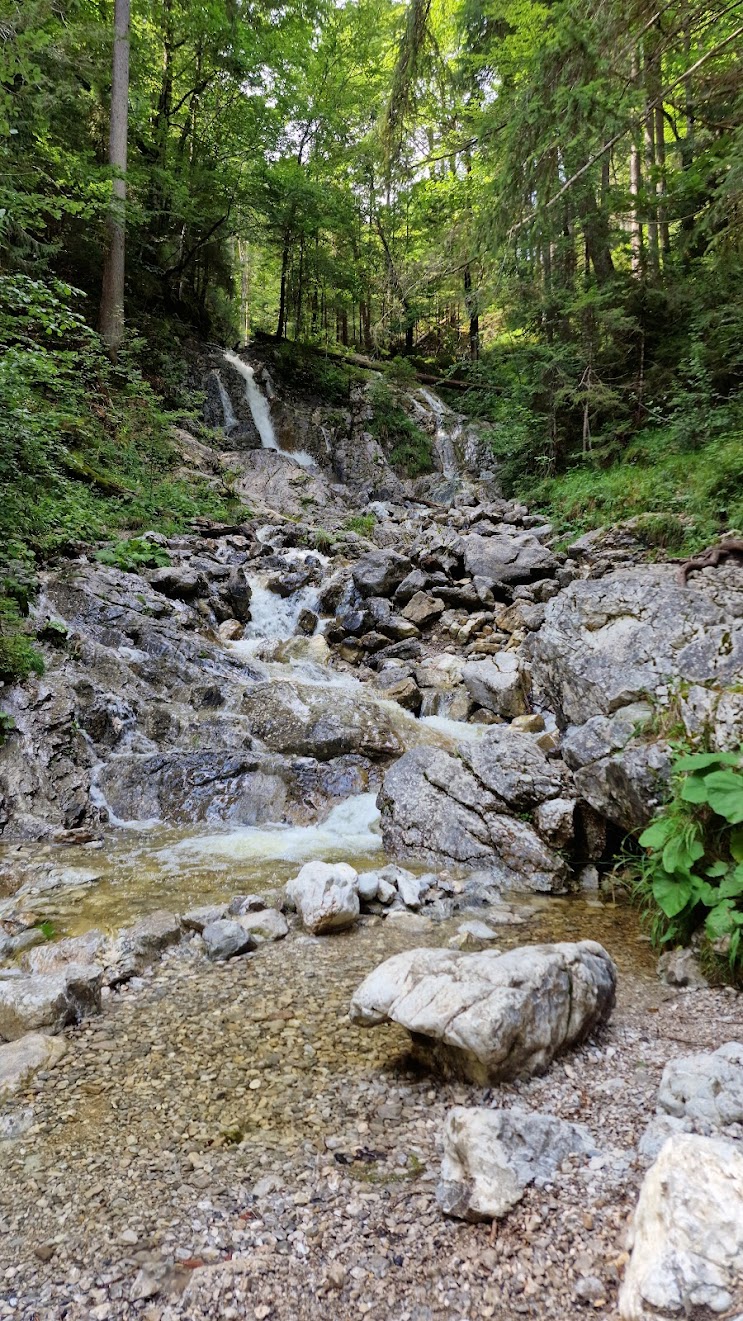
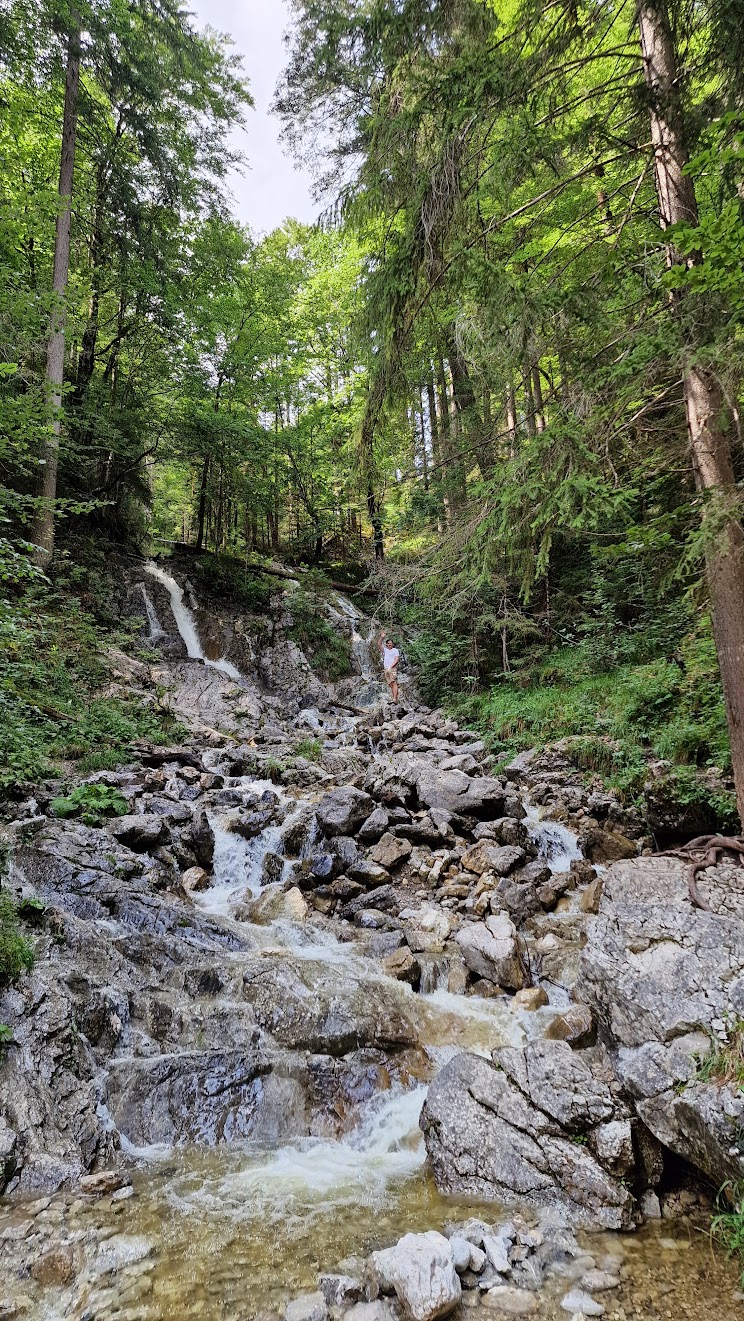
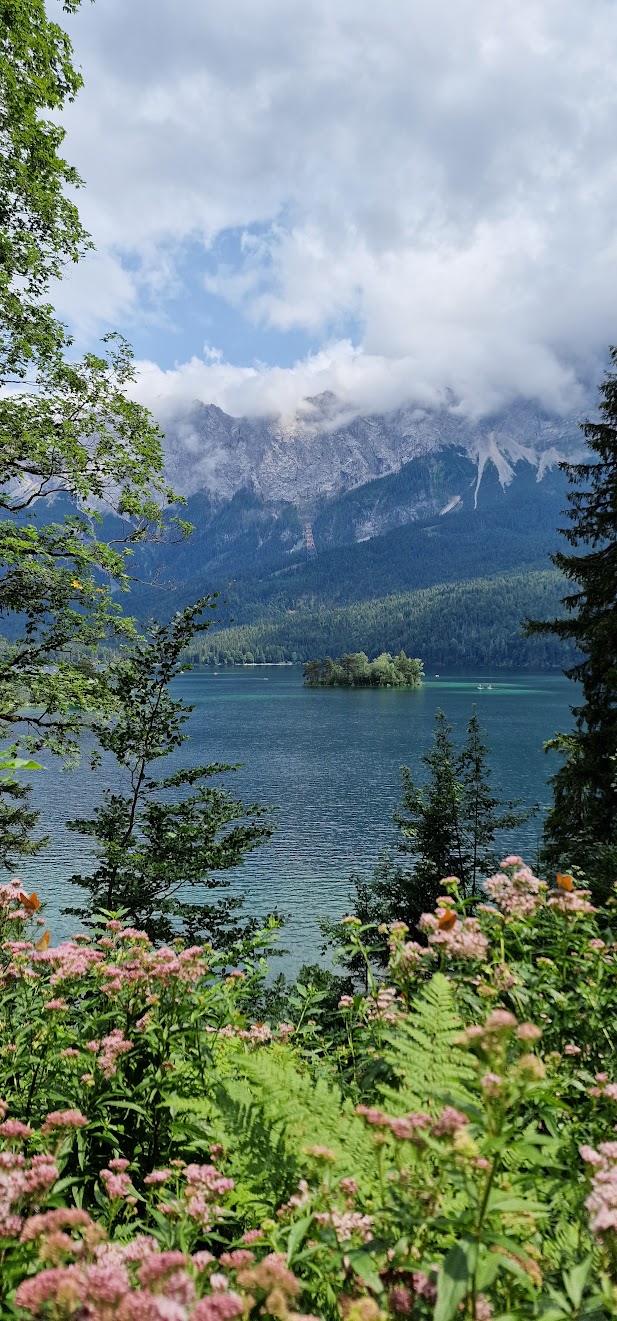
Views around Eibsee.
Hiking
I'm not a big fan of hiking. I love walking, including in rough terrain and under the scorching sun, but I never called it a special term, rather I count this activity as domestic tourism. And in the last 10 years, I haven't specifically gone anywhere for walks, especially in Europe. So, I can't evaluate how good the trails are in Grainau, but they seem to be pretty good.
The biggest difference from post-Soviet countries is organization.
In the post-Soviet space, you usually go where you look: no special trails, no signs, and almost no fences.
Here, all the trails are "polished", there are signs with estimated travel times at every intersection, there are signs to mark easy trails.
But we only walked on simple trails. Maybe if you go further into the mountains, trails will become less "polished".
One time, we had to walk between a high rock and barbed wire — local farmers don't really like tourists, especially dog owners. Everywhere you will notice signs like "do not shit in the salad for my cows".
Maps and signs are striking. On one of the mountains, we saw a trail on the map and a sign with an arrow pointing to the break. I thought: "Well, that's it, the myth of German organization is dispelled." But I decided to look better and found the trail. It was behind the bush, as wide as half of me; it sharply goes down the cliff for 100-200 meters, then gets lost in the forest, but the map and the sign promised that it would lead where it should.
Interesting
Absolutely everywhere, there are (preventive?) clearings; around every corner, there are woodpiles, and we saw several sawmills. At the same time, it is not noticeable that the forest is ending. Apparently, the locals have found a balance with nature.
There is an interesting gorge with a river:
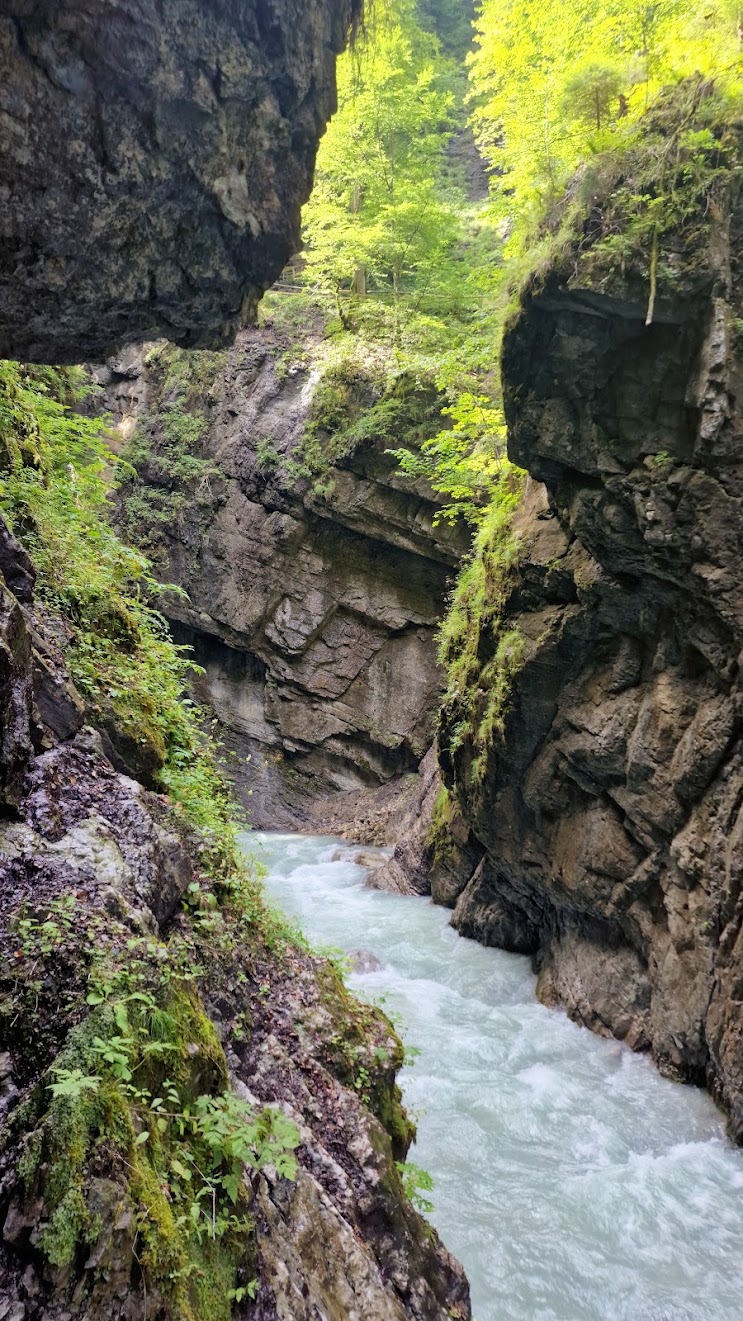
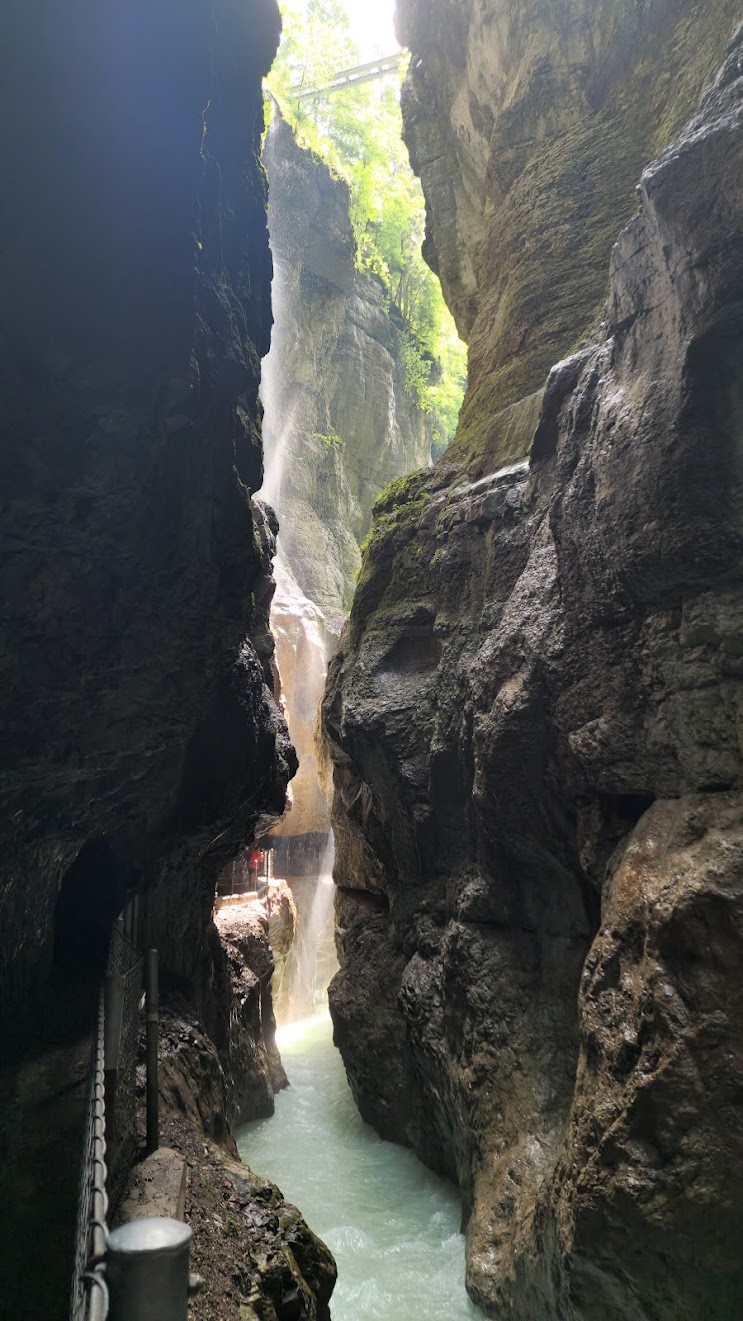
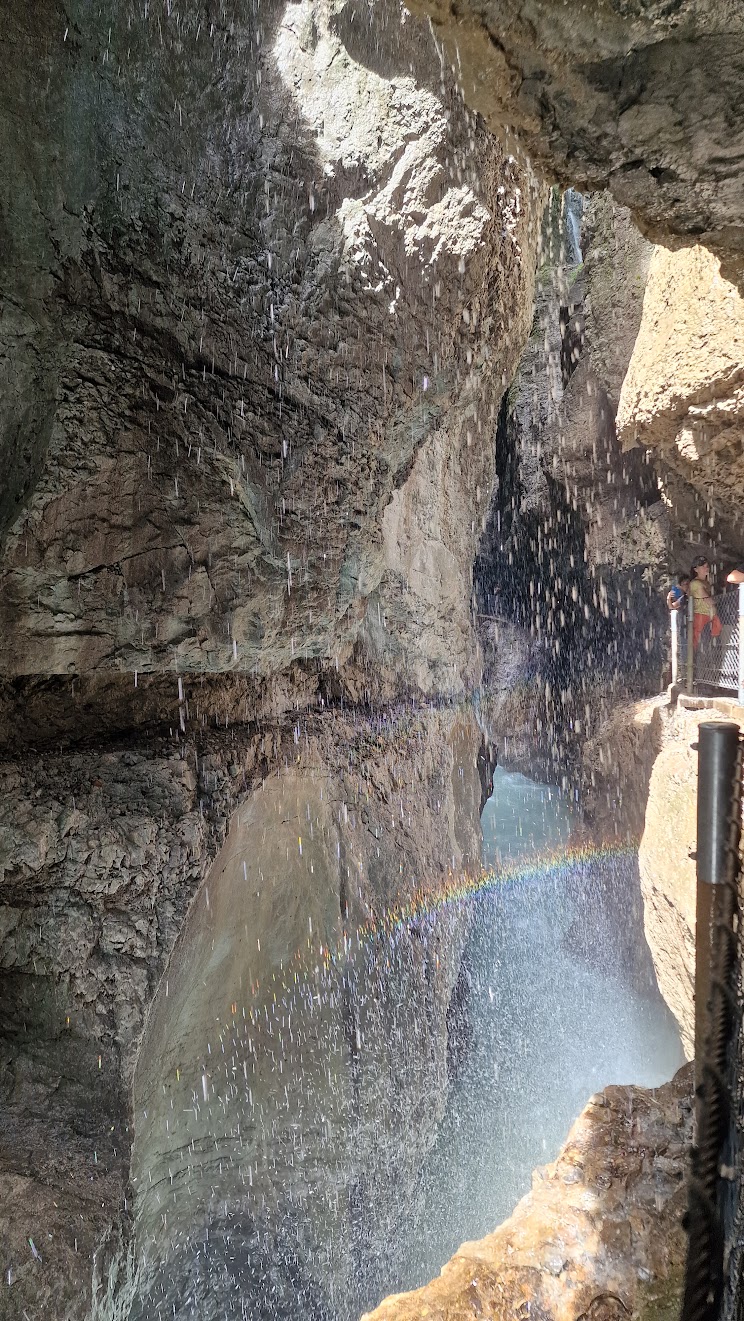
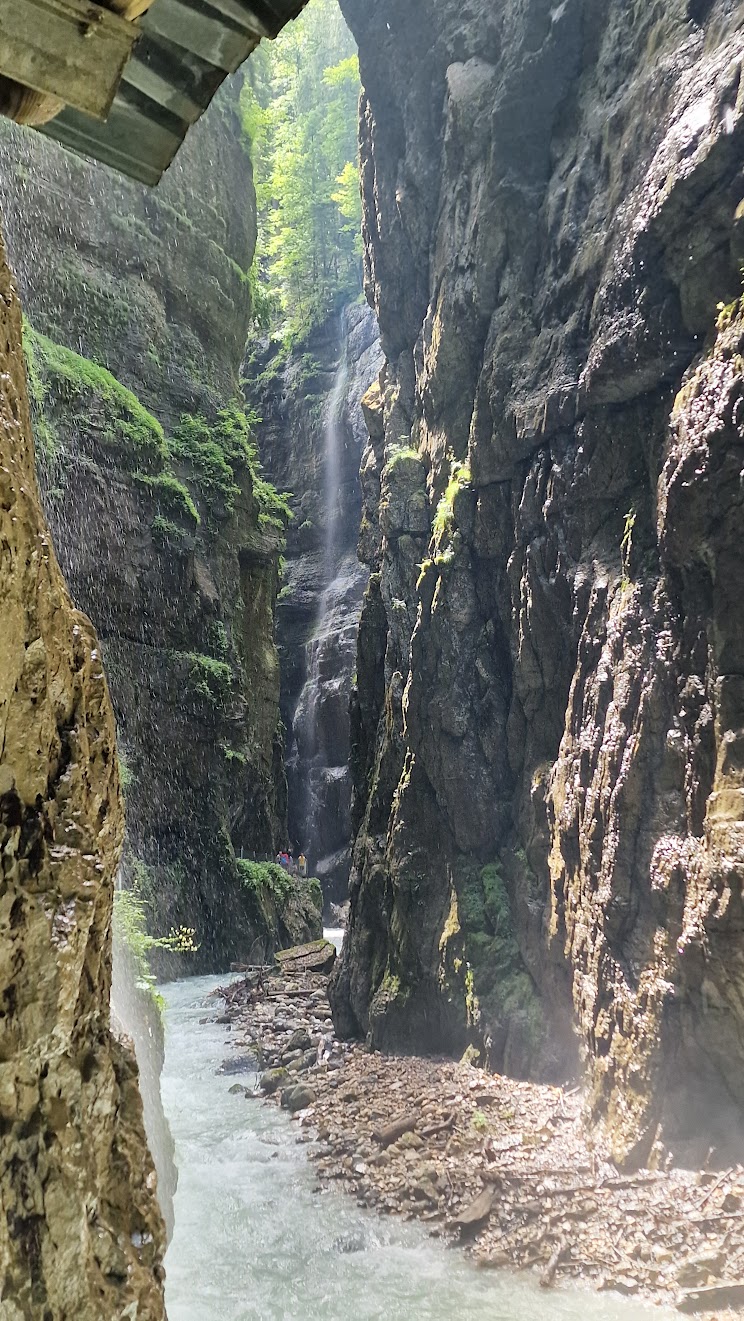
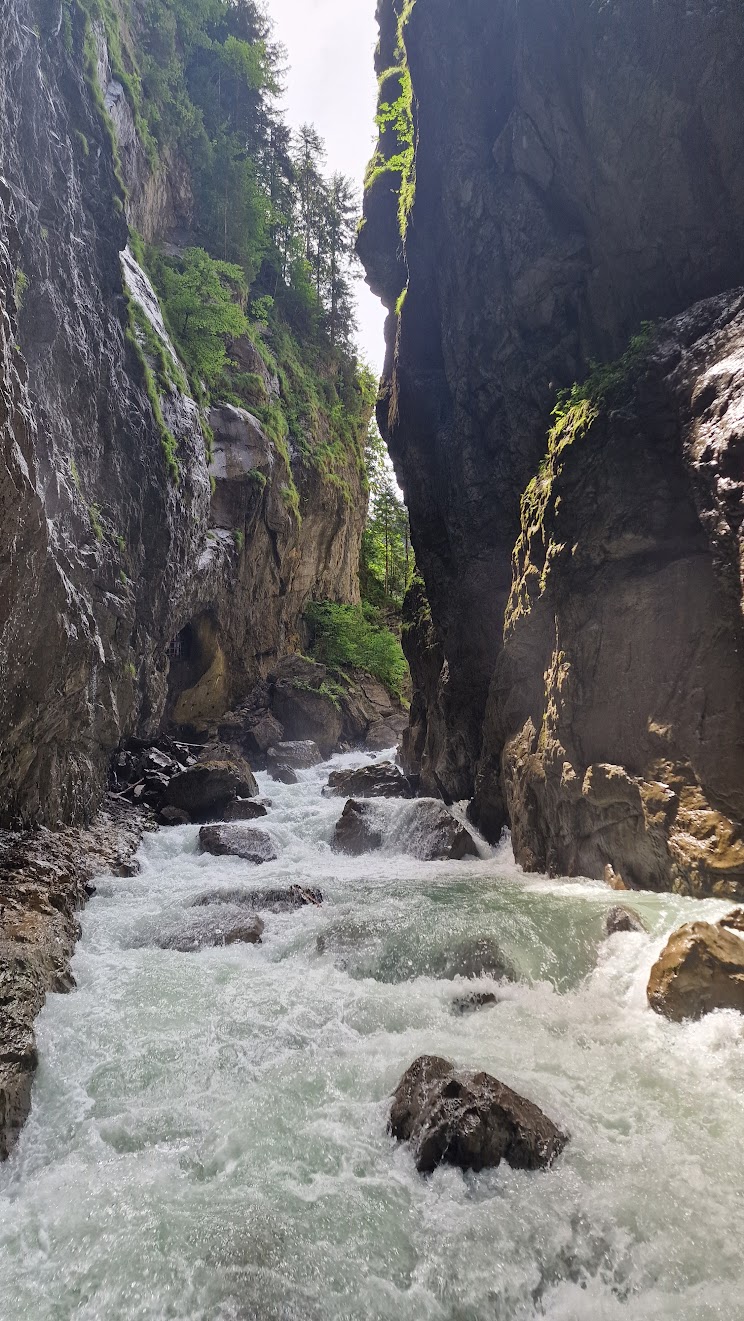
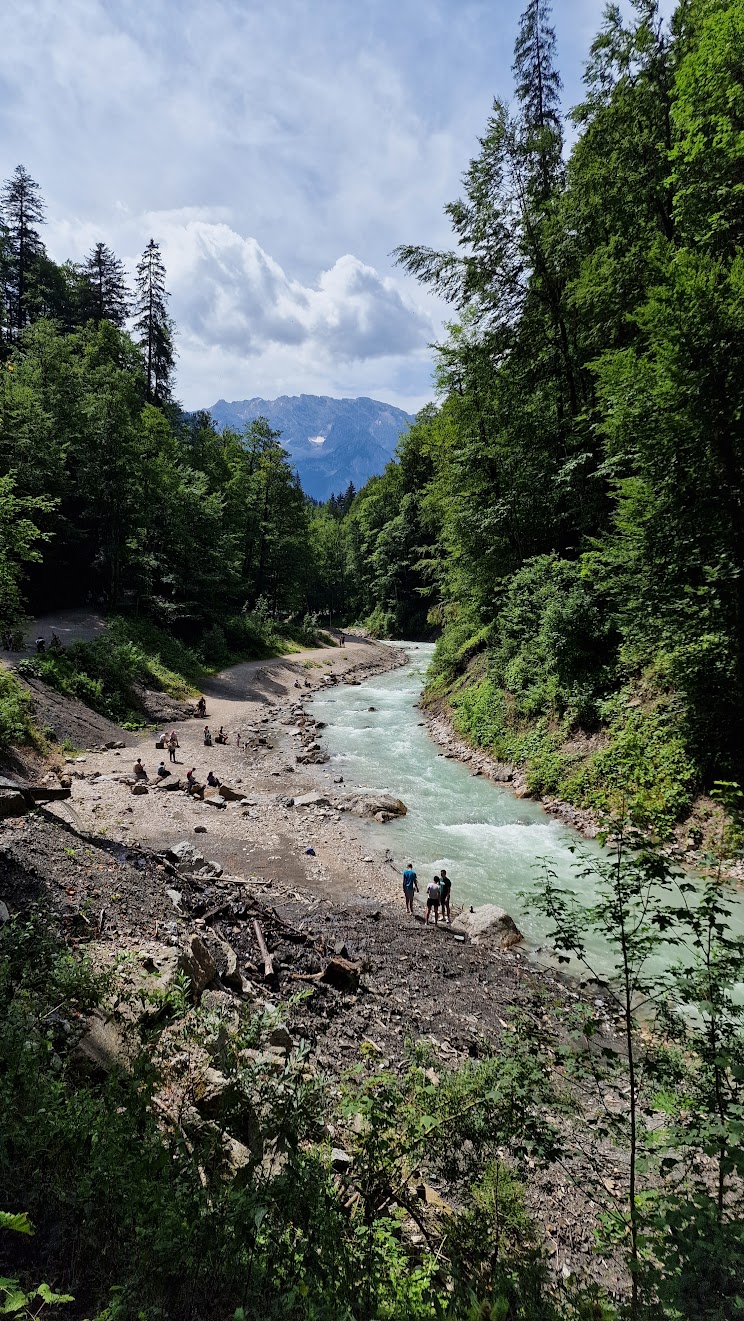
Entrance to the gorge is paid, but not expensive. Be careful, low ceilings, I hit my head three times..
Minuses
- Private properties are everywhere, everything is fenced, it's unusual after open spaces in post-Soviet countries.
- Public transport could be better. The bus runs once an hour, the trains are about the same. At least in summer. Transport can be delayed. The train we wanted to take to the hotel was canceled. In my opinion, it's best to move around by bike.
- By the third day, cows/sheeps/goats with bells started to annoy slightly. In some places, they created a terrible cacophony. And they smell periodically — the smell of nature, so to speak.
Read next
- Dungeon generation — from simple to complex
- Thinking through writing
- Generation of non-linear quests
- World Builders 2023: Preparing a business plan for a game on Steam
- «Slay The Princess» — combinatorial narrative
- Two years of writing RFCs — statistics
- World Builders 2023: Preferences of strategy players
- My sabbaticals
- I am a person who…
- Fun case of speeding up data retrieval from PostgreSQL with Psycopg